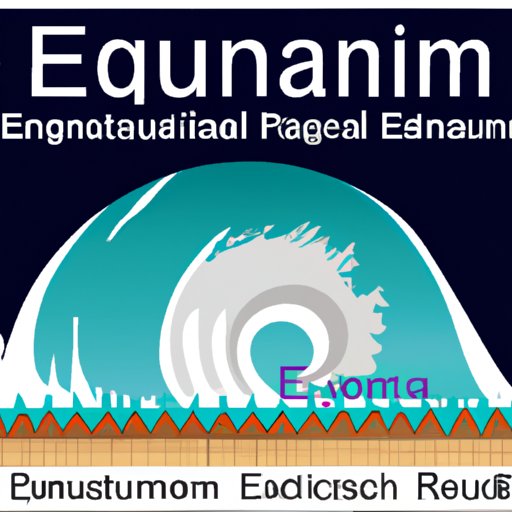Introduction
A tsunami is a series of waves generated by a sudden displacement of the ocean floor due to an earthquake, volcanic eruption, landslides, or other underwater disturbances. While the term “tsunami” is often used interchangeably with “tidal wave,” it is important to note that tsunamis are not caused by tides but rather by seismic activity.
Tsunamis can cause extensive damage as they travel from the sea to the shoreline and beyond, inundating large areas of land. Thus, it is essential to understand how far tsunamis can travel inland in order to mitigate the risk of destruction and prepare for potential disasters.
Investigating the Distance of Tsunamis’ Inland Travel
When assessing the distance of tsunami inundation, it is important to examine both the potential reach of a tsunami and the magnitude of its impact on land.
Examining the Potential Reach of a Tsunami
The distance of tsunami inundation depends on the size of the tsunami wave and the topography of the affected area. A larger wave will be able to travel farther inland, while a smaller wave will only have a limited reach. Additionally, the shape of the coastline and the gradient of the terrain will affect the distance that a tsunami can travel. For example, a steeper slope may limit the reach of a tsunami, while a flatter terrain may allow the wave to travel further.
Measuring the Magnitude of Tsunami Impact on Land
In addition to measuring the potential reach of a tsunami, it is also important to measure the magnitude of its impact on land. This includes assessing the depth of inundation, the speed of the wave, and the amount of sediment it carries. The greater the depth of inundation, the more destructive the tsunami will be. Similarly, a faster wave will carry more energy and cause more damage than a slower one. Finally, the amount of sediment carried by the wave will determine the extent of flooding and erosion it causes.

Exploring the Risk of Tsunami Inundation
In order to understand how far tsunamis can travel inland, it is necessary to compare the depths of tsunami inundation across different locations. By doing so, we can gain insight into the potential risks associated with tsunami inundation in various areas.
Comparing Tsunami Inundation Depths Across Different Locations
The depth of tsunami inundation varies significantly depending on the location. For example, in Japan, where tsunamis are relatively common, the maximum depth of inundation has been measured at up to 37 meters (121 feet). However, in some areas of the United States, such as Hawaii and Alaska, the maximum depth of inundation has been measured at around 10 meters (33 feet). These differences in depth of inundation demonstrate the varying levels of risk associated with tsunamis in different locations.
Understanding How Far Tsunamis can Go Inland
In addition to comparing the depths of tsunami inundation across different locations, it is also important to consider how far tsunamis can travel inland. Generally speaking, tsunamis can travel up to several kilometers inland, depending on the size of the wave and the topography of the affected area. In some cases, tsunamis have been known to travel up to 10 kilometers (6 miles) inland, causing extensive damage to buildings and infrastructure.
Assessing the Effects of Tsunamis on Coastal Communities
It is clear that tsunamis can travel great distances inland, causing significant damage to coastal communities. Thus, it is essential to understand the effects of tsunamis in order to prepare for potential disasters and minimize their impacts.
Impact of Tsunamis on Infrastructure and Property
Tsunamis can cause significant damage to infrastructure and property. The force of the wave can destroy buildings, roads, bridges, and other structures, as well as cause flooding and erosion. Additionally, tsunamis can also disrupt power and communication systems, resulting in long-term disruption and economic losses.
Impact of Tsunamis on Human Lives
Tsunamis can also have a devastating effect on human lives. The force of the wave can sweep away people and vehicles, and the flooding can drown those who are unable to escape. Additionally, the disruption of power and communication systems can hamper rescue efforts and make it difficult for people to access medical care.
Conclusion
In conclusion, tsunamis can travel great distances inland, causing significant damage to coastal communities. The potential reach of a tsunami is determined by the size of the wave and the topography of the affected area, while the magnitude of its impact is determined by the depth of inundation, the speed of the wave, and the amount of sediment it carries. Tsunamis can cause extensive damage to infrastructure and property, as well as put human lives at risk. To mitigate the risks associated with tsunamis, it is essential to understand how far they can travel inland and to take steps to prepare for potential disasters.
(Note: Is this article not meeting your expectations? Do you have knowledge or insights to share? Unlock new opportunities and expand your reach by joining our authors team. Click Registration to join us and share your expertise with our readers.)
